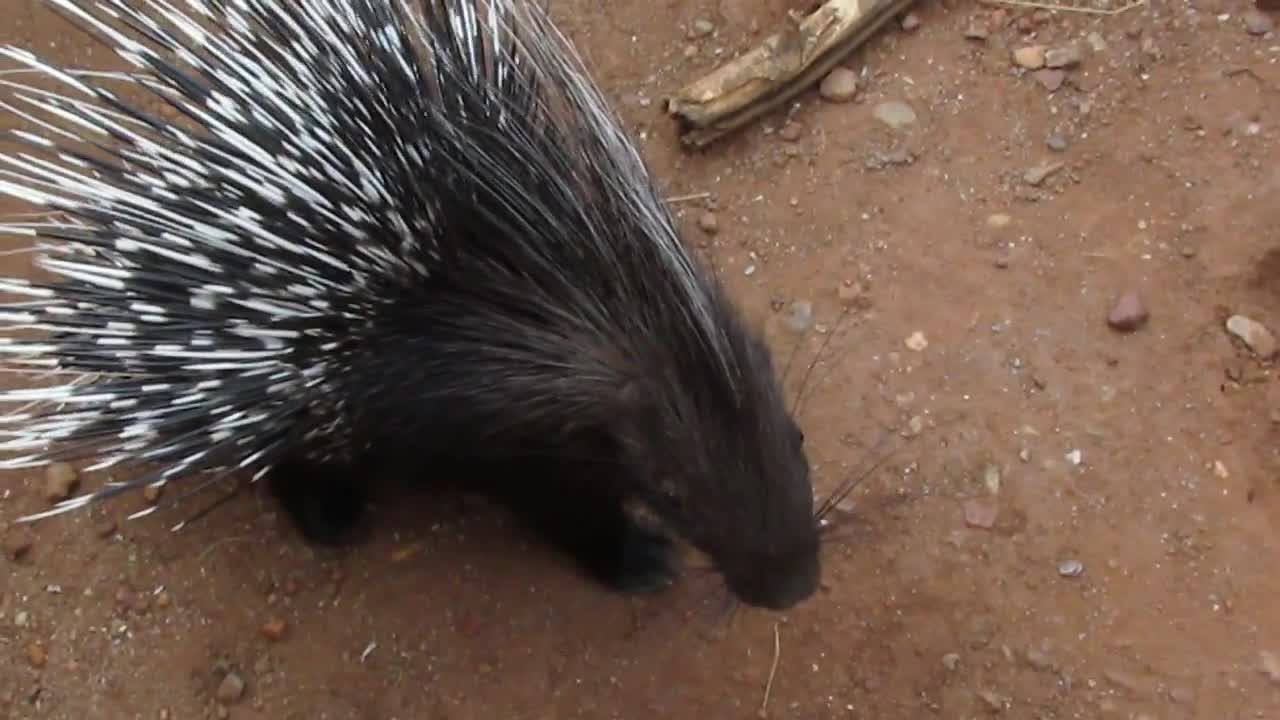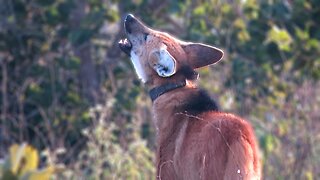Premium Only Content

Baby Porcupines May Not Be Cuddly, But They Sure Are Cute!
These adorable baby porcupines had to be rescued and cared for at a wildlife sanctuary, in the hopes of being released back into the wild once they are old enough to survive on their own.
The Cape Porcupine (Hystrix africaeaustralis), also known as South African Porcupine, is a widespread species that occurs all the way from South Africa to Southern Uganda, and it's found from sea level to 2000 m.
It belongs to the rodent family Hystricidae, and shares the Hystrix genus with the Sumatran Porcupine (Hystrix sumatrae), the Sunda Porcupine (Hystrix javanica), the Phillipine Porcupine (Hystrix pumila), the Crested Porcupine (Hystrix cristata), the Thick-spined Porcupine (Hystrix crassispinis), the Malayan Porcupine (Hystrix brachyuran), and the Indian Crested Porcupine (Hystrix indica).
The Cape Porcupine is the largest porcupine species in the world and the largest rodent in the African continent.
It is found in most of the types of Southern Africa vegetation and have been recorded in the coastal parts of the Namib Desert, but are generally absent from forest.
It has banded quills and spines that can reach up to 50 cm in length. Some in the tail are open-ended and hollow, and make a rattling sound when shaken, as a warning. When threatened, the porcupine will erect them, to make it look bigger, and then it backs towards the threat. They are very sharp and come off easily when touched, so careless predators may even get fatal wounds from them, but contrary to popular belief, porcupines do not shoot their quills. Lost quills will quickly grow back, and shed just like hair.
Cape Porcupines are monogamous animals and mate throughout the year. Litters consist of two to four babies, which the male plays an important role in raising. It is a nocturnal and territorial species, and usually forages alone.
-
 0:33
0:33
NataliaCara
1 year agoWild Maned Wolf roar-barking
3562 -
 58:10
58:10
Kimberly Guilfoyle
10 hours agoAmerica is Back & The Future is Bright: A Year in Review | Ep. 183
59.9K51 -
 3:03:27
3:03:27
vivafrei
15 hours agoEp. 242: Barnes is BACK AGAIN! Trump, Fani, J6, RFK, Chip Roy, USS Liberty AND MORE! Viva & Barnes
108K86 -
 8:09:50
8:09:50
Dr Disrespect
13 hours ago🔴LIVE - DR DISRESPECT - MARVEL RIVALS - GOLD VANGUARD
186K30 -
 1:15:00
1:15:00
Awaken With JP
12 hours agoMerry Christmas NOT Happy Holidays! Special - LIES Ep 71
169K136 -
 1:42:21
1:42:21
The Quartering
13 hours agoTrump To INVADE Mexico, Take Back Panama Canal Too! NYC Human Torch & Matt Gaetz Report Drops!
133K100 -
 2:23:15
2:23:15
Nerdrotic
13 hours ago $12.27 earnedA Very Merry Christmas | FNT Square Up - Nerdrotic Nooner 453
103K11 -
 1:14:05
1:14:05
Tucker Carlson
13 hours ago“I’ll Win With or Without You,” Teamsters Union President Reveals Kamala Harris’s Famous Last Words
195K361 -
 1:58:31
1:58:31
The Dilley Show
13 hours ago $33.68 earnedTrump Conquering Western Hemisphere? w/Author Brenden Dilley 12/23/2024
149K40 -
 1:09:59
1:09:59
Geeks + Gamers
14 hours agoSonic 3 DESTROYS Mufasa And Disney, Naughty Dog Actress SLAMS Gamers Over Intergalactic
101K21